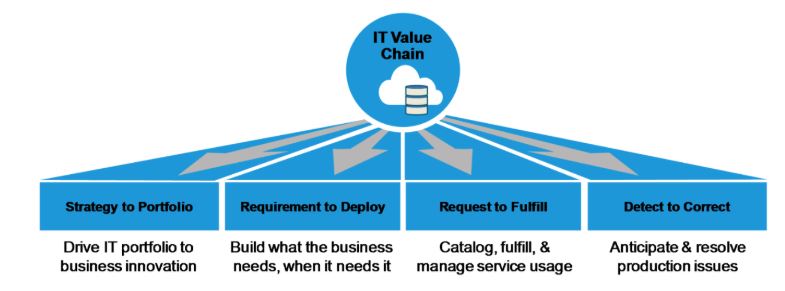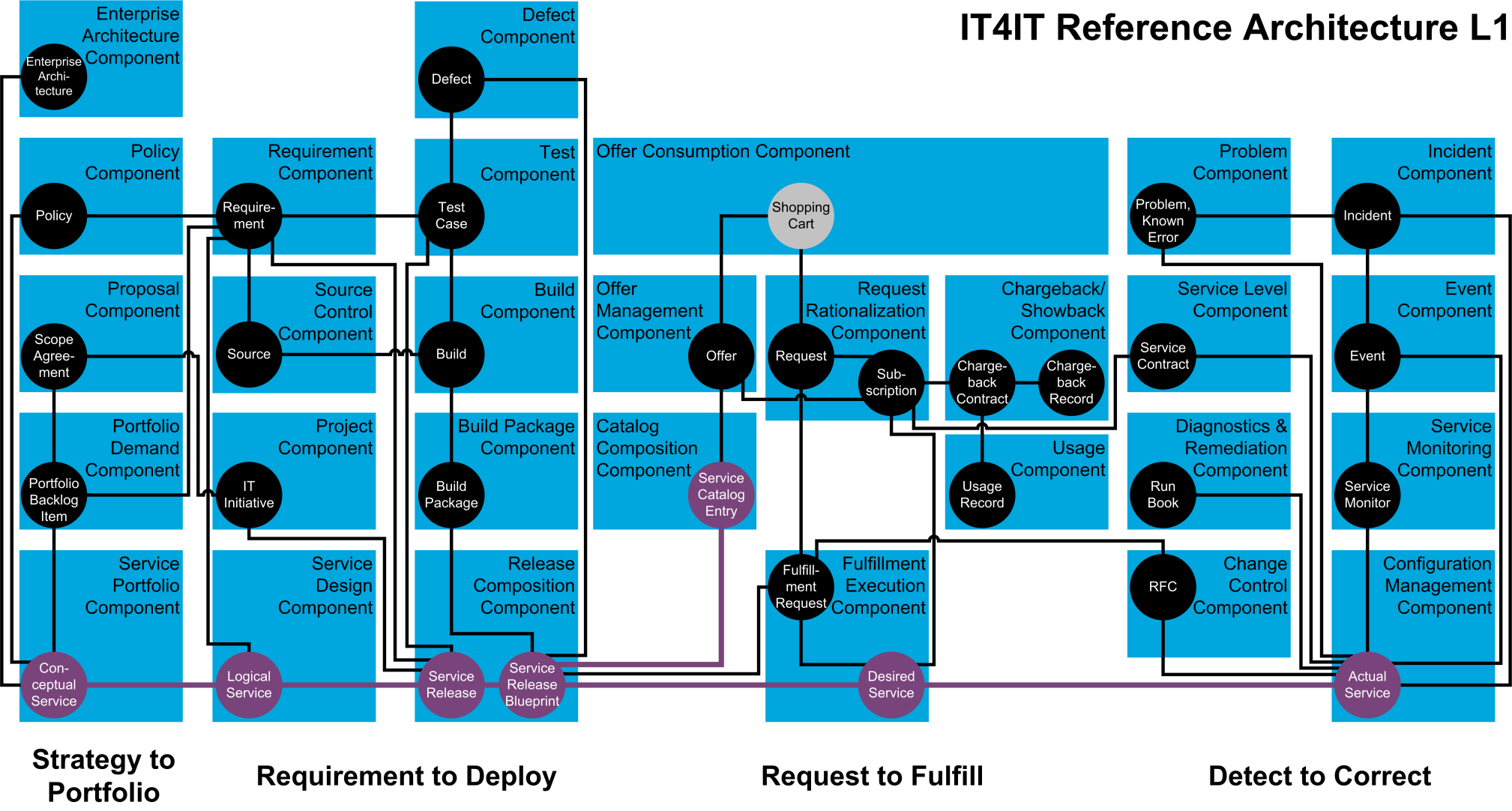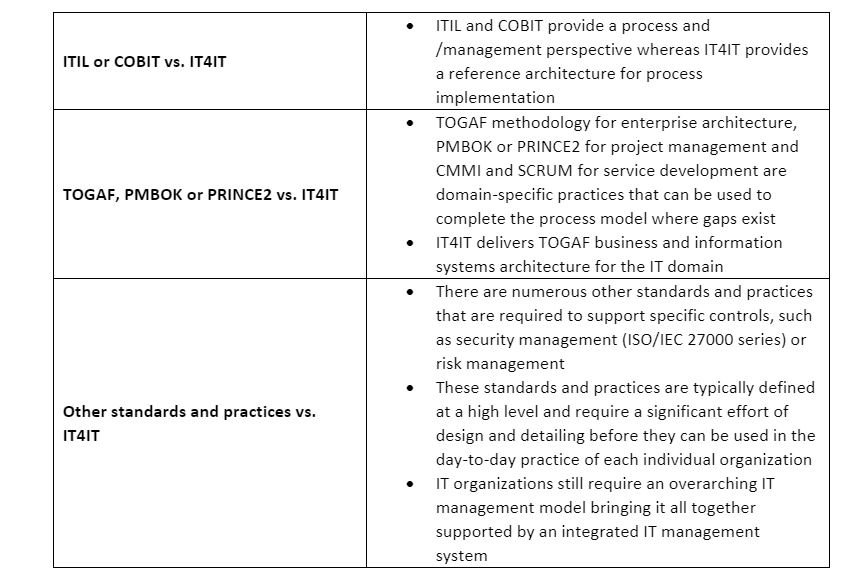Ongoing IT management challenges – like creating new products faster, managing growth, retaining talent, delivering agile yet resilient business services, driving innovation and having responsive IT – are urgent priorities for the organization to succeed and are top of mind for every CIO.
The goal for the CIO is to close the gap between the business and IT so there is little separation between the two, but CIOs often struggle to evolve their legacy IT organization to run more like a sustainable business, and this gets in the way of digital transformation. The IT organization is often over-burdened with short term and reactive efforts, focusing on fixes to resolve immediate challenges and resolving incidents within SLAs, without sufficient mindshare given to the long-term objectives and strategic implications.
The main objective for IT should be to deploy or broker the right strategic services to fuel digital business growth, maximizing value while minimizing cost and risk. To do so, IT must be able to embrace new roles and functions that deploy services automatically, remove bureaucracy and bottlenecks where necessary and ensure that all interactions with IT are meaningful for IT customers.
Enter IT4IT, a standard by The Open Group, which is aimed at helping IT organizations address the strategic challenges brought about by the changing IT landscape. IT4IT is not a silver bullet, but it can be an important tool for any CIO in any organization looking to address these strategic challenges.
Basic principles
The IT4IT reference architecture “prescribes holistic management of the business of IT with continuous insight and control, enabling boundaryless information flow across the entire IT value chain.” IT4IT is designed as an umbrella framework that is useful for companies addressing many of today’s challenges, like migrating to the cloud, deploying agile or devops, undergoing a digital transformation journey or moving to a product-centric operating model. It focuses on the information needed to manage IT and the flow of data between IT management systems, is process and technology agnostic, vendor-neutral, and useful for businesses of all shapes and sizes.
IT value chain
IT4IT redefines the traditional “plan-build-deliver-run” model into four value streams: strategy to portfolio, requirement to deploy, request to fulfill and detect to correct.
- Strategy to portfolio focuses on aligning the IT strategy with the business and investing in creating the service portfolio the business needs to achieve defined business outcomes.
- Requirement to deploy focuses on building or brokering IT services that are required, which includes waterfall and agile teams who are under pressure to build and deploy new services faster and at lower costs.
- Request to fulfill addresses the need for IT to deliver standardized, automated IT services as a main capability instead of how IT has typically provided services in disparate catalogs based on ticket-based processes.
- Detect to correct is a typical break/fix and helpdesk activity that deals with keeping the lights on. Most events can be mitigated by detecting failures early on and preventing service interruption entirely, ideally through automation.

Source: The Open Group
IT4IT reference architecture
The IT4IT reference architecture enables the state of services that IT delivers to be tracked across the service lifecycle.

Source: The Open Group
The IT4IT reference architecture approach for the IT value chain is anchored around four pillars:
- The service model defines how services should be managed in the portfolio
- The information model defines what information is needed to operate IT
- The functional model defines the IT management systems needed to automate and support IT activities
- The integration model defines how processes, data, and systems needs to be connected to deliver value to the business
All these pillars, when captured and modeled correctly, will remain constant regardless of the changes to process, technology and/or capabilities.
Why use IT4IT?
In the face of challenges executing on IT strategy, IT4IT could help with the following:
- Rationalization of systems used by IT
- Operational cloud implementation planning
- Business cloud adoption and/or migration planning
- Achieving constant audit readiness
- Enabling continuous compliance
- Enabling business agility and technical agility goals
- Achieving DevOps transformation goals
IT4IT has been used to: drive interoperability, rationalize applications, assess and improve capabilities, and much more.
Organizations that successfully implement IT4IT will be able to achieve the efficiency and agility that is required to compete in the digital business era.
IT4IT and other practices and standards
In IT management, there are many different best practices, frameworks, and standards to choose from: ITIL, COBIT, PMBOK, PRINCE2, ISO/IEC 20000, ASL, BISL, to name a few.
Below is a list of commonly used best practices, frameworks and standards and how each compare with IT4IT.

Where can I find out more?
To learn more about Protiviti’s IT Strategy capabilities, contact us.





